Thursday 13 June
Andy dropped us at the bus terminal, we were
off to Krakow to spend the day with Nelson friends Anna and Phil who are ‘on
tour’ through Europe.
We took a Flix Bus
(network throughout Europe) departing at 7.40, arriving Krakow 8.50, meeting
our friends at 9.15 to do a tour of the Jewish Quarter. Hmmm…….
The bus notice at the stop said ‘7.50’ and we did depart then, but the
driver stopped to get petrol. Then we
ran into roadworks: a couple of k’s of ripped up one lane of the highway having
new hotmix put down, and I’ve never seen seven road rollers in about 100m
before. Lots of ‘UWAGA!’ signage which
means ‘be careful’. And then it was city traffic and we finally got to the bus
depot at 9.15. We had the phone number of
the tour guide so Pete tried to call…….it went to voicemail three times. Taxi got caught in traffic and were we
pleased to see Phil waiting in the historic Jewish Quarter square at 9.34!! They couldn’t find the tour, had tried the
synagogue, tried a tourist office with no luck; then we saw a tall young man
still standing looking around (he’d been there for about 15 minutes),
approached him and said ‘are you waiting for a tour?’ and he said ‘I am looking
for four people’.
No tour company
notice on display, just this man standing on his own. Not entirely professional.
But back to the bus
ride – the bus was comfortable, driver excellent (other than talking on his
cell phone for a few minutes), drivers we saw were very presentable with
sparkling white shirts with Flix green collars and cuffs and black
trousers. Its cheap too, cost us only
about $5 each for the trip, less than Nelson to Richmond! (And I think the train ride Manchester to
Leeds, about 70 minutes, cost $55 each which struck me as being expensive). The countryside was looking very green
thanks to plenty of rain recently and then the hot weather making everything
grow. There are lots of wooded areas,
quite big stands of pine and beech which Andy wasn’t sure if they are milled or
just woodland. Small villages have the
same square tile-roofed boxy houses, 2 – 3 storeys, very stark, painted in
shades of cream to darkish yellow-beige, or just unpainted concrete. We saw the three-chimney coal-fired power
station smoking away, a bit of farmland with some hay being cut and some
stretches of green fields but not an animal to be seen and not a lot of
cropping.
Anyway……..on with
the tour and our guide Marcin. It seems
it’s a newish company and we’ll be giving them some feedback: the lack of
signage, Marcin’s English wasn’t great and he found it difficult to formulate
answers to questions, also not thinking
about walking on the shady side of the street (we did this ourselves) or
stopping in bright sun when there was shade nearby.
The tour was interesting enough and we’re
pleased we did it but on a day where the temperature was about 31 – 32 (not the
40 our taxi driver had told us later in the day), well, walking just wasn’t the
best thing to be doing. He gave us
water which was appreciated.
We started off in
the main Jewish area square near the statue of Jan Karski who had infiltrated
the ghettos and camps and reported back to the Polish Government-in-Exile as
well as to the allies about conditions and atrocities happening, a very brave
man and a hero in Poland. We stopped
at a memorial to the Jews, where people could leave a pebble in memory of those
lost – in Krakow over 20% of the population was Jewish and after the war hardly
anyone was left.
The first main stop
was the old Jewish synagogue which has been turned into a museum, built against
the city wall in 1492 in the gothic style but with rebuilds and changes to
include arrow slits and it was known as a fortress synagogue. It is the oldest surviving synagogue of this
style. Inside it’s very plain but they
have uncovered old wall paintings that indicated it had been a mass of design
and colour, some of that is on display.
There is a women’s prayer room, they stayed separate from the men. It has a beautiful vaulted ceiling. There is a niche at one end where the Torah
is kept, and around the walls are display cases of items important to the
religion including women’s headwear (must always be correctly presented).
One
display was about marriage – traditionally boys could get married at age 13,
girls at 12 ½ if the parents agreed.
During the war the
building was used as a magazine so I guess that’s one reason it survived, and
sadly the walls were used as an execution spot for Jews. It was looted and there was no trace of the
collection of textiles and silver, but items have been donated to go on
display. Historically the courtyard was used to read
out declarations from the king, public notices, and also to put curses on
people who had transgressed in some way!
Next stop was a
Christian church (I can remember neither the name nor the specific religion)
but it had an enormous gold altar which had been upgraded by the Italians and
apparently they got a bit carried away.
The photo doesn’t show the brightness of the gold but it’s quite a
sight. And the organ was magnificent,
too high to get a good photo unfortunately but I think the Italians had been at
it too. There was a lovely side chapel,
very peaceful-looking.
You have to be
sensitive if people are praying of course, and there was no-one there, but when
I turned round I almost tripped over a nun on one side and a young priest
although he really looked too young.
Very tall, blond, handsome, cassock made of an obviously good fabric,
and when he knelt to pray he was very fastidious about arranging the hem beautifully
over his heels.
The heat was really
getting to us but we trudged on, over the Bernatek footbridge with its circus
performer life-size bronze (?) figures above us, past part of the ghetto wall
which is built with a scalloped top to resemble tombstones, and on to the chair
memorial at the Ghetto Heroes Square with its 33 memorial chairs made of bronze
and iron. I think the building there was
a German HQ of some sort, and there was an execution wall just around the
corner. The area was a market square
nearly 200 years ago when it was a separate town, but now the memorial is for
the Polish Jews who died in the Krakow ghetto between 1941 and 1943. Over 20,000 people were kept within the
ghetto walls, previously home to only 3000.
Marcin provided
tickets and left us at the Schindler factory/museum, three storeys dedicated to
the work of Oskar Schindler with the first part being a timeline of the German
occupation and the second was more about the Schindler factory. We were there for close to two hours but
really there was just too much to take in during a single visit.
We saw how the Jews were gradually pushed
out of their jobs and homes, how life gradually changed and what happened to
them. Some of the exhibits were housed in cases resembling the 'tombstone'-like walls of the ghetto.
They had an
excellent looped film showing interviews with people who had worked in the
factory and it told how Schindler looked after his workers with good medical
care, decent food supplied a couple of times a day, and of course he spirited
away approximately 1200 people away almost overnight. He had a list of names who were to be taken
by the Germans and he called a meeting which was a mass ‘dismissal’, then when
the Germans came with their list each name read out was greeted with ‘dismissed’.
Schindler was German, seemed to have a
finger in many pies, often had important Germans visiting, maybe he was a bit
on the ‘dodgy’ side but his heart was in the right place.
The factory made
enamelware and artillery shells amongst other things and workers were able to
contaminate the shells, for instance, to weaken them and that was one way of
getting at the Germans. In one room
there was a large glass cube containing thousands of tin/enamel plates of
various sizes and shapes, it was hollow and inside you could read the names of
all 1200 who were saved.
We got a cab to
just off the Market Square after that, all four of us well and truly ready for
a light lunch and copious quantities of fresh orange juice to restore the
energy levels.
Andy met us at about
3.30 and we all had a nice cooling icecream, the day not having got any
cooler. Our last stop was the
underground museum underneath the market square which shows excavated streets
which were destroyed in a big fire, shows where a line of metalwork shops was,
a raised wooden ‘bridge’ across a street, the remains of a cart, and many
artefacts they’d dug up. There’s the
remains of a cemetery which include people buried as ‘vampires’ (heads chopped
off and buried beside the bodies). The
main part is rows of ‘booths’ which are a bit like those in the Cloth Hall now,
very well done with low ceilings (because the market square has been rebuilt on
top again) but they are dark mirrored panels so it doesn’t seem
oppressive. The walkway is glass, built
over top of the graves in one part, and over the partitions in one long
stretch. The excavations began in 2005,
and I think the museum has been open for about four years.
We were all ready
for dinner so (after navigating our way around a cycle race going round and
round the square with only one crossing point – run fast between bunches of
riders) we went to a popular restaurant just by the castle. Good meal, good service, good company – and you
can’t say no to the cherry vodka they always dish up when you pay the
bill. It was an excellent day out
and great to share some of what we’d previously seen and enjoyed in Krakow with Anna and Phil, and to
go to some new places as well. We even
managed a bit of shopping in the pedestrian precinct leading to the
castle. Its cobbled and we could see
its definitely not for anyone with high heels (not us, we were on foot and must
have done well over 13,000 steps for the day.
So that was pretty
much the last of our Polish holiday, but we’ll see the family again in Croatia
in a couple of weeks.

 Kraków, Lesser Poland Voivodeship, Poland
Kraków, Lesser Poland Voivodeship, Poland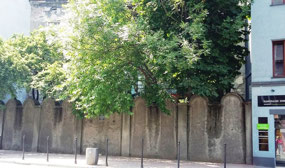
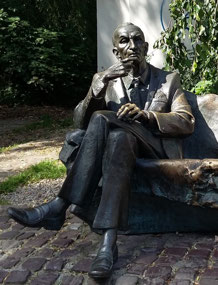
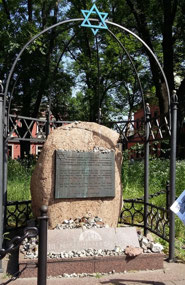
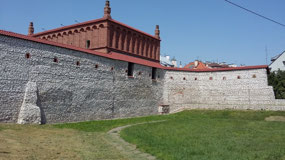
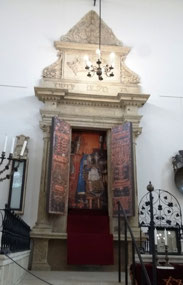
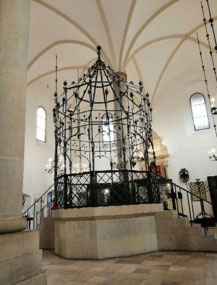
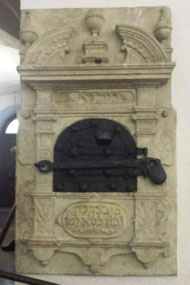










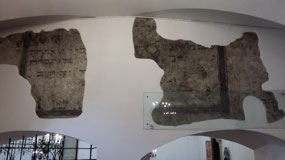
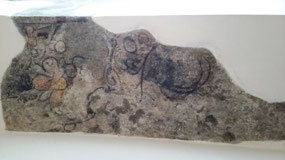
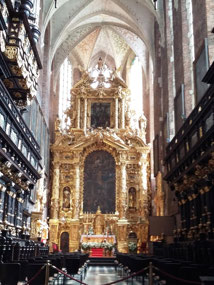
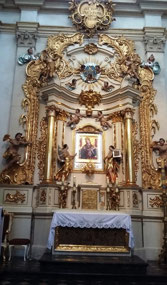
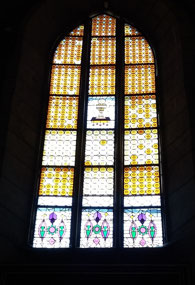
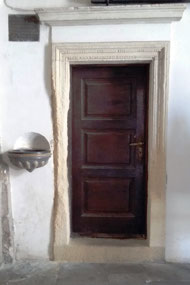
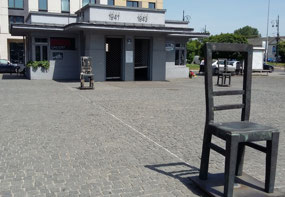
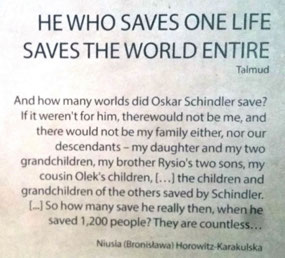
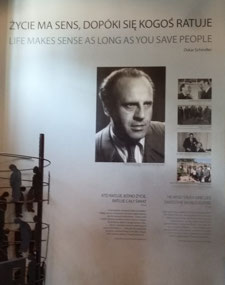
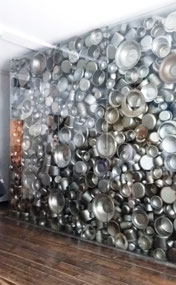
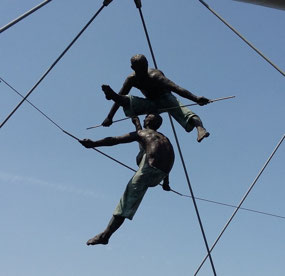
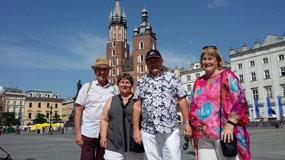
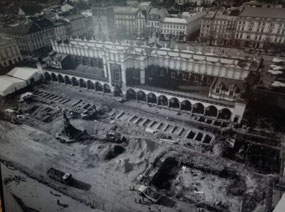
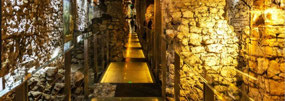
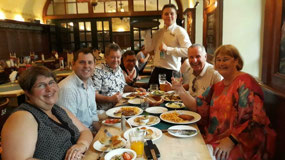
Anna and Phil
2019-06-16
It was a wonderful day out and kind of surreal to be together on the other side of the world. Thanks for sharing your insights on Krakow with us ... we learnt heaps. And loved our dinner together in the rail car
Cheryl
2019-06-16
Very interesting reading Ailsa. Thanks for sharing x
Kate
2019-06-17
Just got myself caught up with the blog aunty, good job. Looking forward to the next installment xox